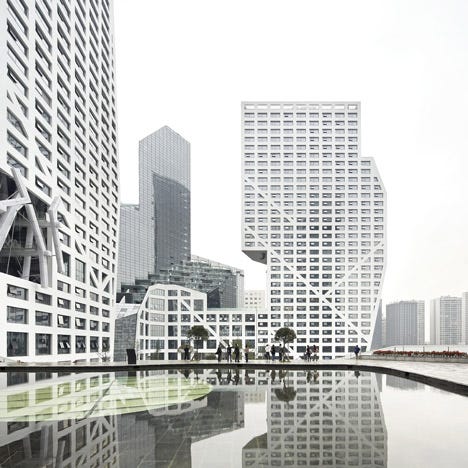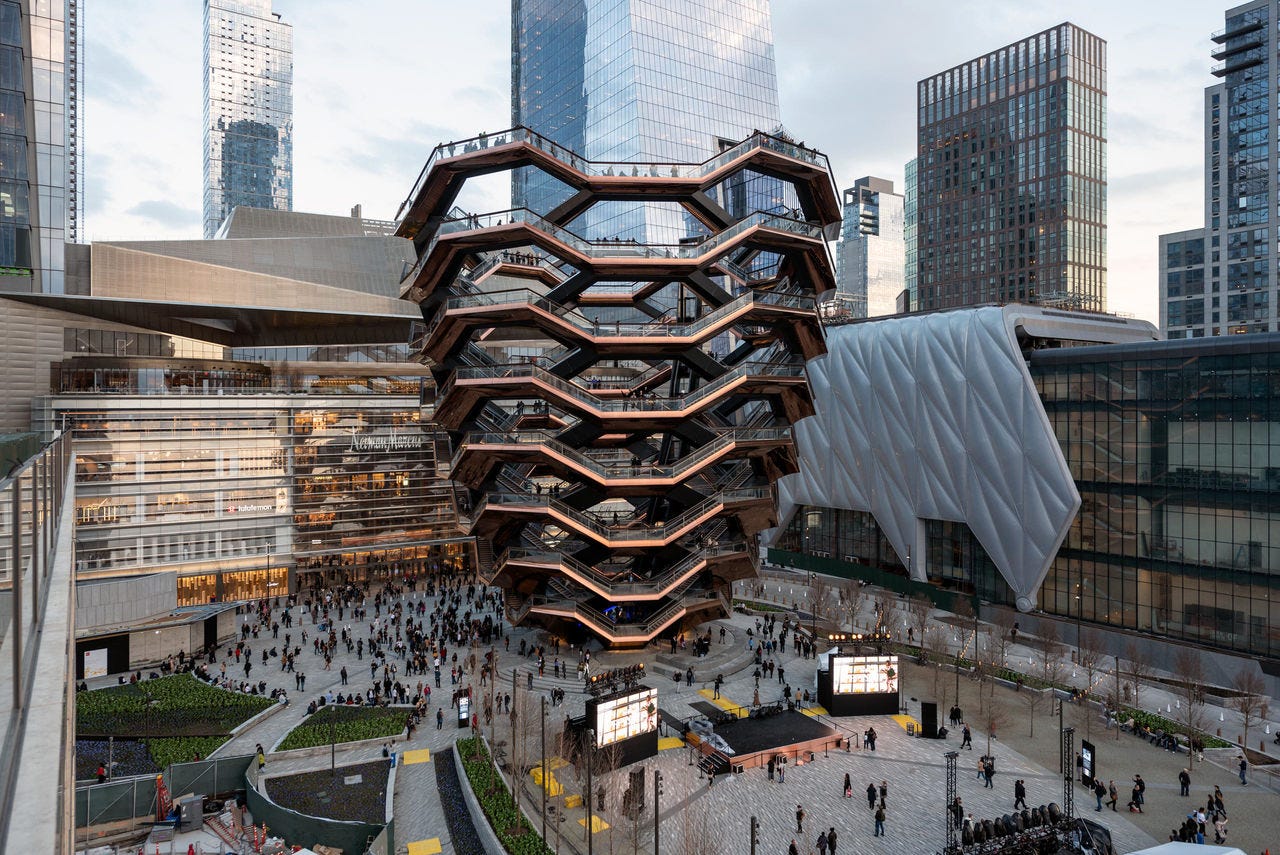In a New York City of decayed design culture, Related Companies and Wynn Resorts has proposed a new mega-casino in the undeveloped section of Hudson Yards, taking advantage of a complete lack of leadership in both New York media, bureaucracy and architecture culture. Though the gold-hued, streamlined look recalls a match of 1930s streamlining and Donald Trump glitz, the project just moves further down the road that began in 2008, when critics shrugged and missed an opportunity for something much better.
It’s a failure to understand and consider the loss that continues to plague NYC planners and bureaucrats.
Design-wise, the new casino, tower and park are not bad. The gold touch, curving shapes and free plan dynamics — with accessible and open plazas, dynamic spaces and interesting nooks that fit in well with the High Line.
Social-wise, who needs a casino in Manhattan? Isn’t there something better Related and Wynn could be building in NYC, apart from a magnet for degenerates and criminals? It’s a failure of imagination that we can’t think of anything better than card games, gambling and slot machines. The brand of Vegas and Atlantic City is not the same as NYC, which has always been high culture — MoMA, Met Museum, Opera, Art District, Wall St, Broadway. How about an architecture and design museum instead of slots? $12 billion is a lot for another casino.
Missed opportunities, Failed Design Leadership
The lack of imagination echoes the problems that have always plagued Hudson Yards. When the first proposals were released in 2008, design has always taken the backseat to political corruption and bureaucratic needs. As well as critical malaise that continues to today. Putting technical needs over practical use. And ending up failing on both counts.
The Related and KPF plan that we see today wasn’t the only option. There were five total developers during the Bloomberg era planning process, most notably the Extell and Steven Holl plan. Instead of a random placement of glass perfume bottle towers, the Extell plan featured a large suspended-deck park, solid architecture (similar to early 2010s era Holl, seen in Sliced Porosity Block in Chengdu, China.
While Ada Louise Huxtable was the only critic to praise the Extell Holl plan as being superior to the other mediocre ones, she failed to properly advocate for it — burying praise in an overall disdain for the process. If only we could be so lucky today — now design isn’t even considered at all in the current New York press dominated by those that put the technical slogans of socialist pandering over practical design realities of use. Nicolai Ouroussoff did praise the plan as well, but always buried in longwinded explanations of bureaucratic processes.
Looking closer at the Extell Holl plan, it would have delivered so much for much less money. The park, built on suspended structure over the existing rail, would be much less expensive, generous and extend the entire length of the development area to the West Side Highway and High Line. It even collects rainwater. The building development would concentrate on the solid ground, saving billions of dollars.
Of course, you still get great architecture but a much more unified feel and Olmsteadian vision. When Michael Kimmelman came out to criticize Hudson Yards phase 1 when it opened, he failed to address why we got such dismal results — because of the same class of bureaucrats that continue to propose dismal results like the current Related Casino.
Failure of design culture echoes in almost every area of New York City, as well as the rest of the country (more on that later). But we need to come to grips with these failures if we are able to look at new projects for Hudson Yards, Sunnyside Yards, Gateway and more.
If you think mediocre to bad urbanism and design is acceptable, then this one is for you:








